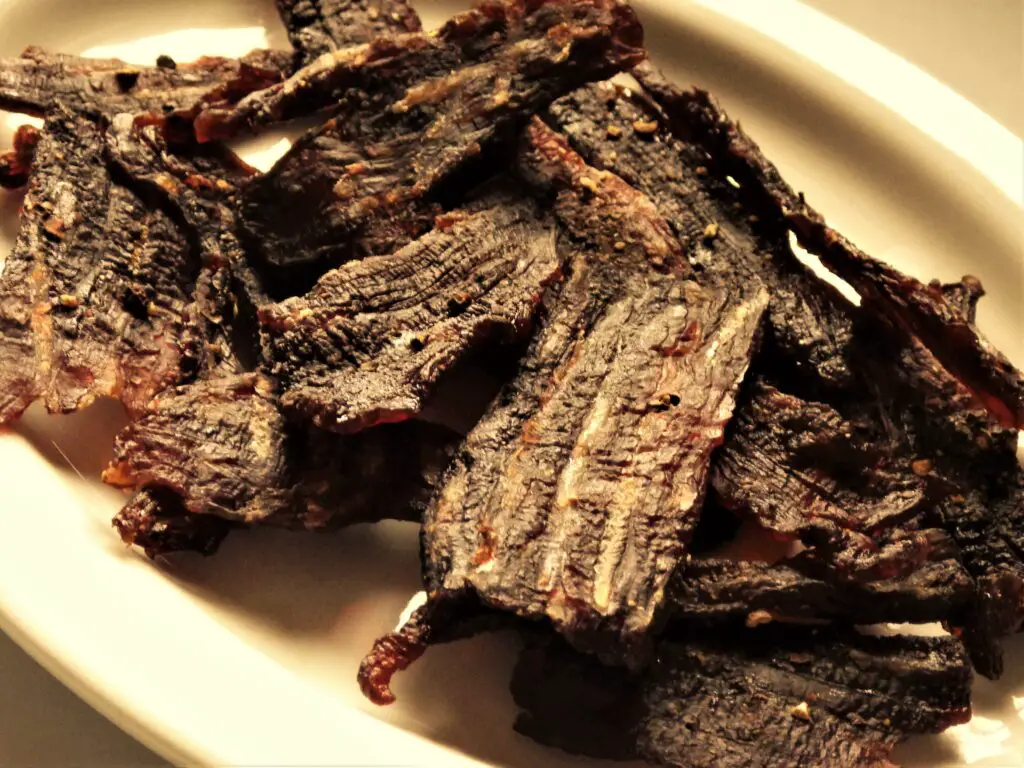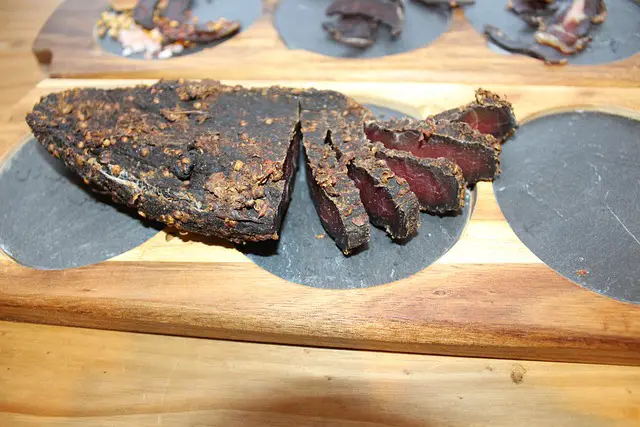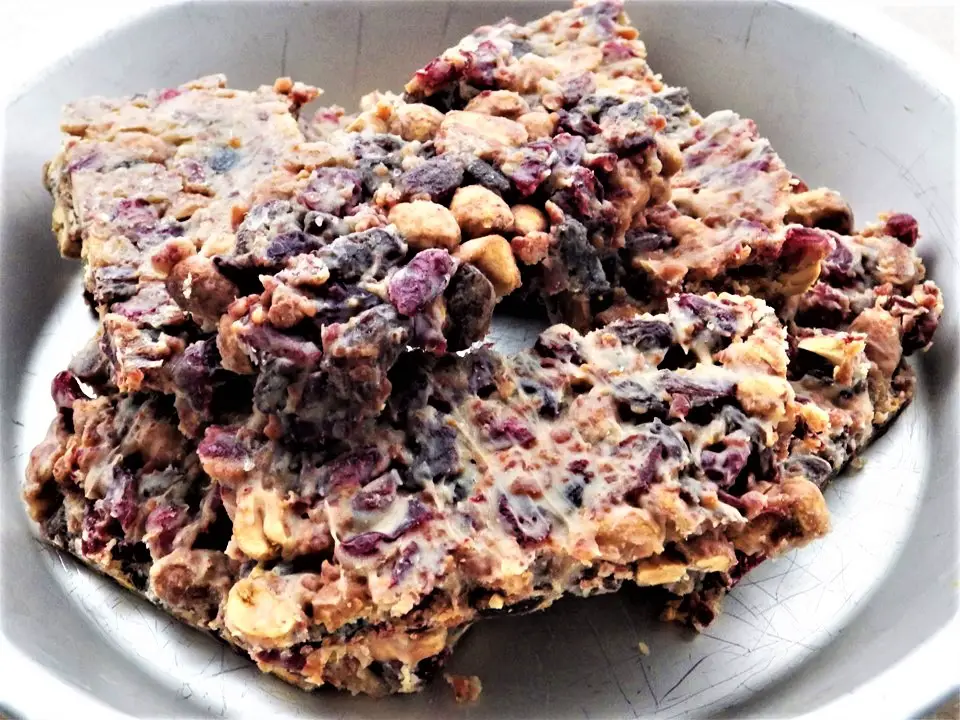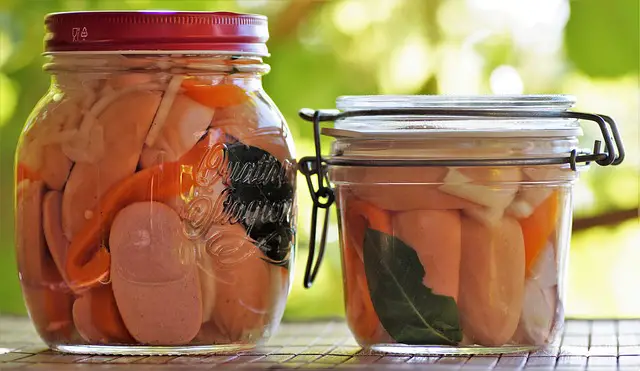Estimated reading time: 12 minutes
Using a refrigerator and freezer to store meat is a luxury turned into a necessity in our current reality. It’s become so ingrained in our lifestyle that once the power goes out a lot of people end up throwing out their meat due to spoilage.
Did you know that storing meat without the convenience of electricity has been practiced worldwide for centuries? Refrigerators and freezers are relatively new technologies in the landscape of storing meat. Instead, simple processes have been used for storing meat. A lot of these methods are low-tech and use simple resources found in the environment around you.
In the case of a disaster scenario, only the simplest and most effective methods will suffice. You will have no access to basic amenities and limited time in which to preserve your meat. This article will teach you the fundamental ways you can store your meat products in an event of a societal collapse.
Want to save this post for later? Click Here to Pin It On Pinterest!
Why Do You Need To Store Meat Properly?
Fruits and vegetables have a longer storage life than meat when kept at room temperature. You’ll often find that meat can spoil within hours if left in these conditions. Proper preservation methods eliminate the possibility of your meat spoiling and dramatically increase the shelf stability if you need to travel quickly.
Wild Game And Livestock
Hunting for your food will be inevitable if you have no grocery store or butcher to supply you. Preserving wild game is a much different experience than what you’d expect with something you picked up at a local store.
Flies are a big problem when you’re trying to prep your meat for storage. They love to lay their eggs when they land, which produces a maggot that feeds off bacterial decay in your meat.
The key is to get your meat ready as fast as possible while using deterrents to try and hold off any insects. Working quickly is important because your meat already started warm and will be that much closer to spoiling than if it came from the fridge.
Bacteria Will Spoil Meat Quickly
The reason your meat spoils is the result of bacterial growth that starts on the surface of the meat. When you purchase the meat you won’t notice any of the bacteria on it, simply because they are too small to see.
As the bacteria multiply and start to eat away at the meat they will begin to excrete waste material. This waste is what changes the color and smell of the meat, giving it that rotting smell while turning gray or green. Bacterial waste is toxic to humans and is responsible for problems like food poisoning.
Other microorganisms such as yeasts and molds can render your meat inedible. The nice thing is that proper preservation methods create an environment hostile enough to deter them from growing.
Think Beyond The Freezer
Bacteria thrive in a temperature range of 40° and 140°F where they proliferate in a matter of minutes. To combat this, most people will keep their food in a refrigerator to slow the process. Others will deep freeze their meat, putting it in an environment that is hostile to bacteria.
The problem is that you need electricity to run these appliances and when the grid goes down the meat will begin to thaw out. This will be a large obstacle for many to overcome as traditional meat storage methods are not regularly practiced.
So if the general idea is to keep the bacteria off of your meat then what can you do to accomplish that goal?
Well, if bacteria thrive in a moist environment then finding ways to remove that dampness is one approach. Removing oxygen from the environment you’re keeping the meat in is another effective practice. Let’s take a look at the disaster-proof methods you can use to store your meat.
6 Effective Methods For Preserving Meat With No Power
These storage techniques are approachable for all skill levels but need to be executed properly to avoid getting sick. Trying them out while you have electricity is a great way to prepare for a disaster event. There will be links provided with each method for further learning and it's encouraged that you are diligent in your research before attempting any of them.
1. Dehydration or Drying

Drying out meat is probably the most recognizable of the various storage methods. You can find it being used in various cultures across the world for a variety of meat, such as beef, pork, poultry, and fish.
It is a common example of a process that removes as much moisture as possible from the meat which results in inhibiting bacterial growth. Fewer bacteria mean less excreted waste, extending the shelf life way beyond what’s normally possible. Drying your meat can extend its storage capacity for up to a year, as long as it’s kept in the right conditions.
You should consider drying your meat as one of the main methods you use to preserve meat without using electricity. It works with most meat types you’ll have on you if SHTF. The only exception against using drying would be chicken as it doesn't dry out as well as something like beef. The texture may be a bit weird but it’ll still be edible protein if you rehydrate it.
What you’ll need:
- Metal rack
- Thin slices of meat
- A small fire next to the meat
Hanging your meat near a fire is the most common way to dry it out as quickly as possible. The radiant heat from the coals will evaporate the moisture while the smoke will keep the flies away.
Using the sun is another effective way, however, it requires a lot of consistent sun and airflow to do it properly. Here is an example of a DIY drying rack in which you can use the sun to evaporate the moisture in the meat.
2. Salting

Salt naturally draws the moisture out of anything, so encasing your meat in it will pull out every last bit. Without a damp surface for bacteria to grow, you will effectively preserve the meat until you’re ready to eat it.
Additionally, salting your meat will change the PH of the meat. Bacteria that cause infection can survive across acidic and alkaline environments, but never the extremes of either. Salting your meat changes the PH to become extremely acidic, halting potential growth from bacteria, yeasts, or molds.
This method is the easiest, all you have to do is completely encase your whole piece of meat in a shell of salt. The crust will then go to work and sap the meat of every last bit of water.
When the process is done the meat will form a hard crust on the outside. Chipping at the salt shell will reveal perfectly preserved meat underneath. The texture and taste will be altered using this technique but still enjoyable.
If you take the meat, wash away the salt, and then let it air dry (wrap it in some kind of cloth) in a dark environment you can effectively cure the meat. In a survival situation, you may not have the luxury of curing your meat, so salting is still the preferred way.
3. Pemmican

Storing dried meat in the wrong environment can still cause it to spoil. Turning it into shelf-stable food such as pemmican can remedy that. Native American communities used it throughout North America and were then picked up by explorers. It became popular because of the nutrition packed into this food. It consisted of dried meat, tallow (or lard), and dried berries. It had a high caloric value and provided lots of energy.
Pemmican will keep for years, even in fluctuating temperatures. This means that in a situation with no electricity, you can have a steady source of nutrition that can easily be made by hand.
Mash up the meat and dried berries until they’re in a fine powder. Ensure you use lean cuts of meat as the attached fat will retain moisture and turn rancid as you dry it. Slowly add the rendered fat until the mixture just absorbs it, you don’t want the meat to be swimming in the fat.
Now you can take the mixture and mix it up until it forms a sort of dough. You can flatten it out, make it into bars, or whatever works for the situation that you’re in. For a visual recipe to follow, check out this video on making low-tech pemmican with only two ingredients.
4. Smoking

Much like drying, smoking your meat creates an environment that inhibits bacterial growth. Without bacterial growth, you won’t experience any decaying of the meat. Smoked meat is also incredibly popular, largely in part to the distinctive flavor that the process imparts.
Smoking meat introduces different chemicals such as phenols, increasing the longevity of the meat through these preservatives. Use this method if you’re looking at keeping an emergency stash of protein as the process isn’t quick.
Picking the right wood for smoking is important for a couple of reasons. The first is that a coniferous tree would make a poor wood source for smoking since they are full of resins that will stick to the meat. Secondly, dry, seasoned wood will perform much more effectively than fresh, green wood.
Here are the best wood varieties to use for smoking meat:
- Cherry
- Hickory
- Applewood
- Oak
- Maple
The idea is to hang meat in a room or container that also has damp, smoldering wood chips. The acrid smoke will keep any flies away which will stop them from laying their eggs. As the smoke permeates the meat and dehydrates it, a hard crust will form and the meat will become tough and chewy. You can purchase a portable smoker or make one yourself if you’re handy with tools.
5. Pickling

Pickling meat is uncommon, but doable in a survival situation. The general idea is to pack the meat tightly into a jar and then fill it with vinegar. Changing the PH to be more acidic in such a drastic way will kill off any bad bacteria. Fermentation will occur which will then increase the shelf life even more.
Unlike drying meat, this method is time-consuming and requires proper supplies and preparation for it to succeed. In this case, the container is just as important as the meat since it needs to be stored in a cool, damp environment. It needs to be clean and able to be made airtight to not introduce new bacterial growth.
Some people are put off by the texture and taste of pickled meat, claiming that the meat is soft and tastes strongly of vinegar. However, multiple pickling recipes include herbs and spices that help mitigate the distinct taste it imparts.
Overall, this method provides shelf-stable meat that can hold up to years of storage. Pulling this technique off does require a small dedicated area for prep and final storage so keep it in mind once you’ve found a place to relocate to.
6. Potted Meat

Potted meat has different names depending on the ingredients and technique used. For example, confit is used with duck meat that is stored in its own fat. However, potted meat combines a cooking method with meat preservation to create a shelf-stable product.
The technique itself is basic science, you want to salt the meat and then slow-cook it throughout the day. Then after packing it into a container you want to cover the meat with pure, hot fat. When the fat hardens it will create a seal in which air, heat, and light cannot get to it.
Potting meat works especially well with meats like beef and fish. Usually, the meat will end up looking like a paste that can be spread on bread or eaten as is.
Keep the potted meat stored in a cool place or it can still spoil. It is an effective preservation technique for colder climates or throughout the winter months.
Tips For Preparing Your Meat For Preservation
Each preservation technique has its own best practices for success. There are some general guidelines you can follow that are transferable across the different traditions.
Keep The Meat Dry
Patting your meat dry and then keeping it away from moisture is the first step in most long-term storage methods. This is because a moist environment can promote bacterial growth if left for too long. If your meat is wet then it’ll take longer to preserve which is another incentive to ensure it goes into the process dry.
Trim As Much Fat Away As Possible
For most preservation methods you want to trim the fat off the meat. This fat contains a lot of moisture which can cause it to go rancid and spoil the rest of the meat. If you’re making pemmican then you want to make sure the meat that you’re drying has very little fat or the final product will have a limited shelf life.
Try To Preserve Whole Meats Only
Ground meats technically have more surface area, which means more space for bacteria to grow. Additionally, the fat is ground up with the meat and mixed throughout so you will have a difficult time using any preparation method that doesn’t involve rendering the fat out of the meat.
Whole meats provide even drying as the moisture inside is consistent. Less room for bacteria to grow means you’ll have more time to get all of the moisture out of the meat.
Final Thoughts
If a disaster occurs and refrigeration becomes impossible, how will you preserve your current and future meat supply? The easiest methods are the low-tech kinds where natural processes strip away beneficial environments for bacteria. Finally, proper storage of your shelf-stable meat, namely keeping it away from heat and light, is just as important as the preservation methods themselves.
Like this post? Don't Forget to Pin It On Pinterest!









